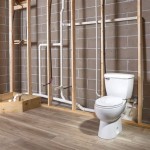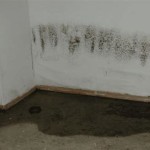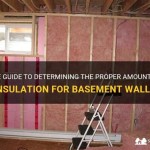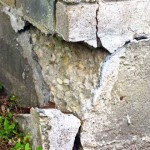How to Remove Radon from Your Basement
Radon is a naturally occurring radioactive gas that can cause lung cancer. It is found in the soil and can seep into homes through cracks in the foundation. Radon levels are typically highest in basements, where the air is more stagnant. If you are concerned about radon levels in your home, you can test the air yourself or hire a professional to do it for you. If the radon levels are high, you can take steps to remove the radon from your basement.
1. Seal cracks in the foundation
One of the most effective ways to reduce radon levels in your basement is to seal any cracks in the foundation. This will prevent radon from seeping into your home through the cracks. You can use a variety of materials to seal cracks, such as caulk, sealant, or expanding foam. Be sure to follow the manufacturer's instructions for applying the sealant.
2. Install a radon mitigation system
If you have high radon levels in your basement, you may need to install a radon mitigation system. A radon mitigation system is a device that removes radon from the air in your basement. There are two main types of radon mitigation systems: active systems and passive systems. Active systems use a fan to draw radon from the air and vent it outside. Passive systems use a natural draft to draw radon from the air and vent it outside. Radon mitigation systems can be installed by a qualified professional.
3. Increase ventilation
Increasing ventilation in your basement can help to reduce radon levels. You can increase ventilation by opening windows and doors, or by installing a fan in the basement. Be sure to open windows and doors on opposite sides of the basement to create a cross-breeze. This will help to circulate the air and remove radon.
4. Use an air purifier
An air purifier can help to remove radon from the air in your basement. Air purifiers work by filtering the air and removing harmful particles, including radon. Be sure to choose an air purifier that is specifically designed to remove radon. Radon air purifiers are available at most hardware stores.
5. Test your radon levels regularly
Once you have taken steps to reduce radon levels in your basement, it is important to test your radon levels regularly to ensure that they are still low. You can test your radon levels yourself or hire a professional to do it for you. If your radon levels are still high, you may need to take additional steps to reduce them.

Reducing Radon In Your Home National Program Services

Radon Mitigation So You Have Now What

What Kind Of Radon Reduction System Is Best Trinity Electrical Services Inc

Radon In The Home Mass Gov

Removing Radon From A Basement Drain System Youtube

Radon Mitigation Blackburn Foundation Repair

Removing Radon Gas From Crawlspaces Basements Easily Ecohome

Radon Mitigation And Testing Dry Basement

Do I Really Need Radon Mitigation Utah Services
No Need To Panic Steps You Can Take Rid Your Home Of Radon
Related Posts







